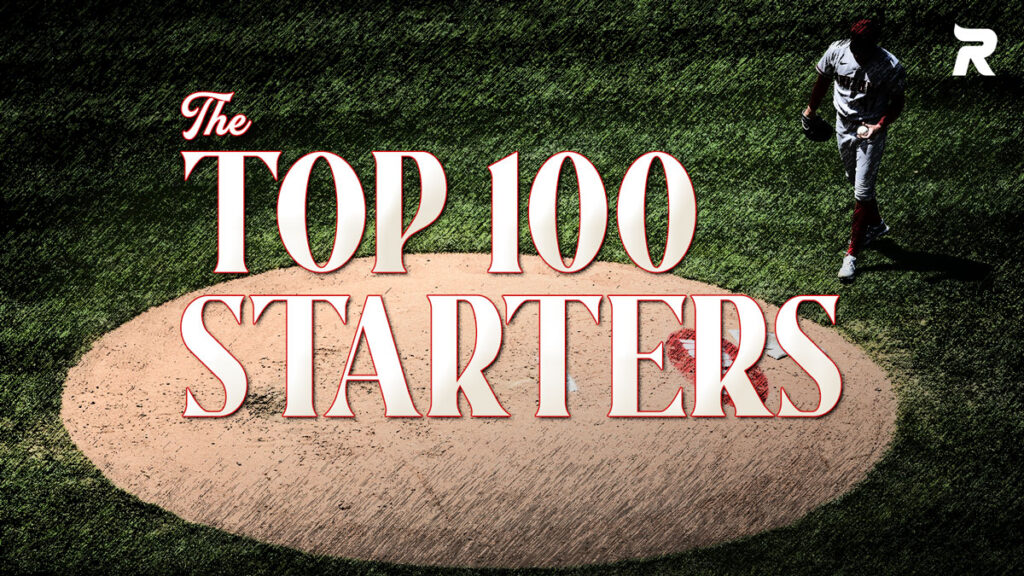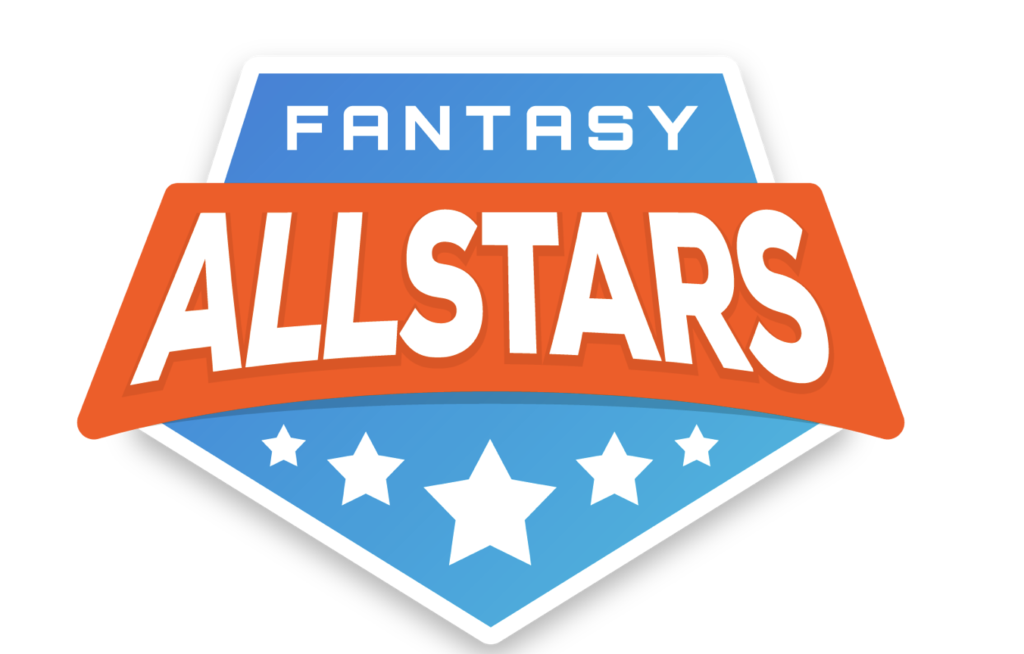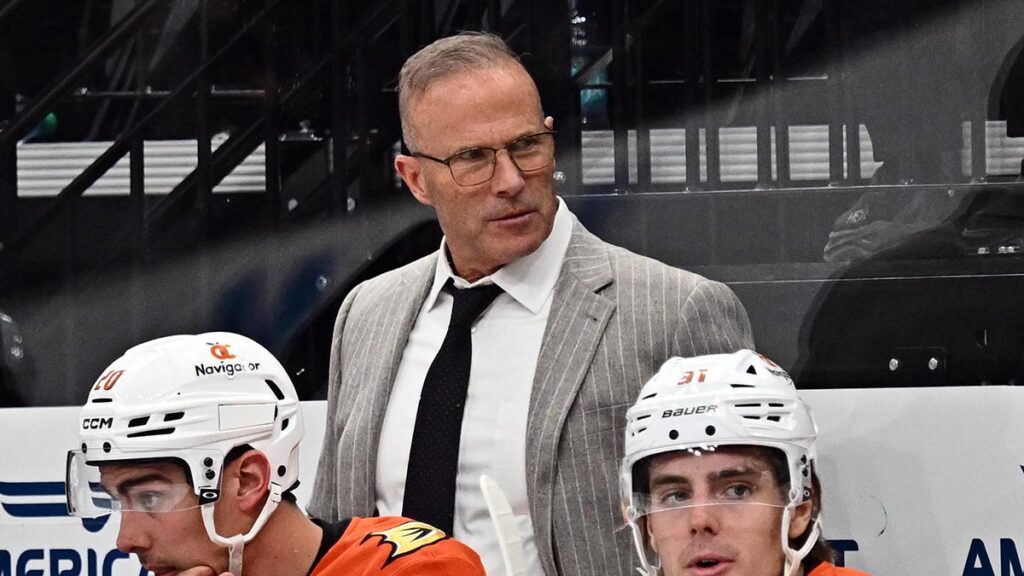SAN DIEGO — The most important trophy the San Diego State men’s basketball program has ever won is not resting in a glass case.
Maybe one day. But for now, it’s propped on a folding table covered in a red tablecloth, in the middle of a courtyard, a few feet from an electrical cover, next to a Mexican food truck named Belinda’s Familia. So completely out in the open that you can — as many Aztecs fans are on this recent Friday night, before their team’s home tilt vs. New Mexico — smell Belinda’s mouth-watering California burritos while simultaneously touching the 2023 NCAA Tournament South Region championship trophy. The only way the program could give back to its fans any more, beyond the night’s photo opportunity, would be by subsidizing their to-go orders.
“Try to give all the fans whatever time they want, because they’re loyal,” coach Brian Dutcher says. “The city loves us. They’ve taken good care of us.”
Dutcher is in his 25th season with the Aztecs — and seventh as head coach, after succeeding Steve Fisher — and has seen the program go from 4-22 the year before he arrived to within 40 minutes of a national championship. He understands, and appreciates, that SDSU fans have been along for that same ascent.
Plus, let’s face it. When a school like San Diego State — the best non-power conference program on the West Coast, save Gonzaga … but still a Mountain West school — makes a run like last season’s Aztecs do, people don’t just forget. “It hasn’t died down yet,” says director of player development Aguek Arop, who joined SDSU’s staff this summer, immediately after his senior season ended. “Hasn’t totally sunk in yet, to be honest. Maybe in like five, seven years or something … But right now, all the memories are still fresh.” As they should be, that whole run on a mental replay: rallying past No. 1 overall seed Alabama to make the program’s first Elite Eight; Darrion Trammell’s clutch free throw vs. Creighton that sealed a Final Four berth; Lamont Butler’s game-winner vs. Florida Atlantic; and ultimately, falling short against a UConn-shaped buzzsaw. You can’t walk past five fans outside Viejas Arena before you see someone wearing Final Four apparel. As one middle-aged man waiting in line for his photo op says, it was “magical.”
Was. Past tense.
Because it was also 10 months ago, with a different roster. Even with seven returners back, last year’s success has no impact on the No. 21 Aztecs — who, at 23-9 after Tuesday’s loss at UNLV, have already lost more games than they did last season and have been eliminated from the Mountain West regular-season title race. San Diego State was a top-16 seed in the selection committee’s early bracket reveal last month, but it needs to beat Boise State on Friday night just to be a top-4 seed in the Mountain West tournament.
It’s a tough line to straddle: appreciating what happened, without letting it become an anchor in the present. Dutcher can easily control that dichotomy inside his locker room, but outside it? Results bear expectations. And the Aztecs achieved, so now they must carry that mantle — the weight of playing underneath a black NATIONAL FINALIST banner night in and night out. Their geography only exacerbates the issue. San Diego is … uh, eager for winners, to put it gently. America’s eighth-largest city somehow only has one pro franchise in the country’s top four leagues (Major League Baseball’s Padres) … and more NFL teams who have relocated (one) than overall professional championships (zero). “I like to say we’re the other pro team in San Diego,” Dutcher says.
Which makes this season a peculiar place for fans to occupy, too. Aztecs supporters, sensibly, understand the uniqueness of last year’s run. But now that they’ve seen the top of the mesa, you think they’re not desperate for another climb?
“Now that we were there, we can’t act surprised we were there — and now we can’t act surprised that we’re trying to go back. You can’t make the mistake of saying it was a ‘once in a lifetime’ experience. It’s a first in a lifetime,” Dutcher says. “We have to find our way back to that game somehow, and that’s what the mission is. Keep working, keep grinding. It’s always easy to say; it’s hard to do.”
Lamont Butler, who hit the game-winner against Florida Atlantic in the Final Four, is now the Aztecs’ grizzled veteran. (Louis Grasse / Getty Images)
That mission begins in places like this: a grueling Thursday afternoon practice. Dutcher sets the tone before the first rebounding drill, standing near a hoop with a bubble over the rim:
“Before you jump,” he hollers, “just f—ing hit somebody.”
This is how the Aztecs operate: with physicality, defense. A sandpaper mentality. “It’s truly like, how hard do you have to play every single possession,” says assistant coach and de facto defensive coordinator Dave Velasquez, “to never relax?” Because at their best, the Aztecs don’t. They’ve finished with a top-10 adjusted defensive efficiency rating in three of the last four seasons — they finished fourth last year — and currently are No. 9 in the country, per KenPom. And you can see why in one 90-minute practice; Dutcher circles the court to view things from all angles, imploring his players to “build walls” the opponent cannot penetrate. “The one thing about defense here is, it’s never good enough,” Velasquez adds. “I tell everybody, I wish we could run that UConn game back, because there’s so many better things we could do.”
That 76-59 loss to the Huskies was also the last shot for SDSU’s veteran core. A quartet of players — Arop, Nathan Mensah, Adam Seiko, and Keshad Johnson — played on the 30-2 team in 2020, which never got its NCAA Tournament opportunity because of COVID-19. Combined, they played in a staggering 548 games for SDSU, starting 225 of them. They knew Dutcher’s defense, the level of work that was expected, as well as any player possibly could. “That,” Dutcher says, “was nice.”
After the season, Johnson transferred to Arizona; the other three exhausted their eligibility. Butler, a 65-game starter his first three seasons, is the team’s only fourth-year senior. He’s also the only person on the roster who played at SDSU more than one season. “I don’t envy him,” says Arop. “You’ve got young guys, you’ve got transfers. It’s a lot of new faces.”
Dutcher — who has been a transfer whisperer since before the term’s popularity — had to go back to the portal after, and during, the championship run. Velasquez was even on the phone recruiting Reese Waters — who won Pac-12 Sixth Man of the Year at USC last season — on the bus ride on the way to the national championship game.
The Aztecs’ pitch never wavered, despite unprecedented postseason success.
But the response to it did.
“What do you know about San Diego State? That used to be my first question, and the answer was always, Kawhi Leonard and you guys win,” Velasquez says. “But now it’s like, Final Four. You know, Final Four, and then they could name something else. ‘Final Four, and you guys win the Mountain West a lot.’ They can name the league, even, that you’re in. ‘Final Four and defense.’ Final Four, and they might even be able to name a Malachi Flynn or a Jalen McDaniels, along with Kawhi. Just because of that run.”
Waters committed. So did Jay Pal, a ball-swatting forward who spent time at Jacksonville State and Campbell. Not exactly household names, even though the program probably could’ve chased those.
But Dutcher never considered it. Nor did he when the Leonard-led Aztecs made the program’s first Sweet 16 … or when a different group made it back three years later … or when the 2020 team seemed poised for a No. 2 seed. Each time, he heard the same retort: “You’re really going to be able to get good players now!” The way he saw it, though, the benefit of SDSU’s run wasn’t the freedom to chase after sexier names. It was the opposite: reaffirmation to keep doing what got the program to the Final Four in the first place — even down to transfer-portal evaluations. For example: Dutcher rejects the notion that you can learn all you need to about a player just from highlight clips on Synergy, a video and analytics database; he prefers watching full games, time-consuming as it is.
“We’ve found a way to get good kids in this program for a long, long time,” he says, “and it’s not all talent. It’s character. It’s wanting to win. It’s buying in — that you’re going to have to play defense if you come here.”
But Dutcher put it best:
Easy to say. Hard to do.
Viejas Arena is cut into an end zone of the old Aztec Bowl, San Diego State’s former football stadium. It’s a relative rarity, topologically speaking; most structures in the region are either atop mesas, or in the valleys beside them. That means you either enter through the concourse-level courtyard, where fans are eagerly awaiting trophy pics … or you take the long way. Hang a left past the student gym, go down 93 steps and several graffiti-painted switchbacks, turn right at the Aztec Monument — a 9-foot stone that’s a registered California historical landmark — walk across a parking lot, and finally you’re at the loading dock. There, on this night against New Mexico, 17 NBA scouts are waiting for their credentials pregame.
Aka, waiting for the opportunity to watch SDSU’s latest slow-cooked star: Jaedon LeDee.
“The go-to guy,” Butler calls him. “A beast.”
It’s hard to argue. Like the arena he plays in, LeDee looks like he was cut out of rock, as sturdy as the mesa SDSU’s campus sits upon. That’s what years of borderline excessive training get you, though. (LeDee’s Houston-area family even built a halfcourt in their house, for more convenient training whenever he’s home.)
“He almost works too hard, and I mean that sincerely,” Velasquez says of the 6-foot-9, 240-pound senior. “He’s a guy that, you get done with practice, and then he’s on the track running, and then he comes back at night, and then he wakes up in the morning and works out. As a coach, you start to worry. Is it too much on his body? Because then, hey, buddy, you’ve got to play 35 minutes on Friday.”
But all those banked hours, plus LeDee’s diligence in taking care of his body — “pro stuff,” Waters calls it — have led to an All-America-caliber season. And here’s how Dutcher knew the former Ohio State and TCU forward would fit in his program: LeDee asked to sit out a season when he first arrived in 2022, to redshirt, to learn the Aztecs system and necessary level of physicality. Two seasons later? He’s averaging 20.5 points, 8.3 rebounds, and 1.2 steals per game, while drawing 7.5 fouls per 40 minutes — the fifth-best rate in the country, per KenPom — and is among the favorites to win MWC Player of the Year.
Not even Leonard won that.
Those inside the program say they saw this coming. The tip-off? The summer LeDee first arrived, he went up against Mensah — one of the best defenders in the country, currently with the Charlotte Hornets — and “would literally kick Nathan’s butt every day in practice,” Velasquez says.
“Not just Nate,” Arop adds, laughing. “Me, Keshad. He kicked everyone’s a–.”
The on-court success was always somewhat expected. Maybe not to this level, coaches say, but certainly more than the 7.9 points and 5.3 rebounds he averaged as a role player last season. “I’m the one probably that held him back more than anybody, just because of the makeup of last year’s team,” Dutcher says. “He was capable of doing more, but he wanted to win. He did what was required.”
Now for the Aztecs to win, though, more is required. LeDee hasn’t struggled with the outside noise, he says, and he’s quickly becoming familiar with the various double- and triple-teams opponents throw at him. But the thing that hasn’t come as naturally? Accepting, within San Diego State’s locker room, that he’s this guy. That he has to get the ball — or the Aztecs don’t win.
“This,” LeDee says, “definitely was new for me.”
And while his is the most dramatic role change from last season, LeDee isn’t alone. Butler still starts every game, and may win the league’s Defensive Player of the Year award, but around him? Dutcher has used more starting lineups than he has maybe ever, searching for the right combinations. Take sophomore Elijah Saunders, for instance. After only playing 93 total minutes last season, Saunders emerged as a starter in the fall. But LeDee’s frontcourt complement said after the New Mexico game — which the Aztecs won by 11, courtesy of Saunders’ 12 points and personal 8-0 second-half run — that he was almost “relieved” when Dutcher brought him back off the bench. “Mentally, it was just kind of rough for me to be in the starting lineup,” Saunders said. “Afraid is close to how I felt.” Pal has started some games, too, providing shades of the rim protection Mensah used to. Micah Parrish, last season’s sixth man, made his jump into the starting five.

Brian Dutcher is sticking with what works for San Diego State. (Candice Ward / USA Today)
And then there’s Trammell, the reigning South Regional MVP.
“I was playing my best basketball,” he says of the offseason, “and then, boom, I’m out.”
Trammell’s Final Four-clinching free throw versus Creighton — which played on the Aztecs’ hype video earlier this season — motivated him to dive back into his training this summer, after a few short vacations to nearby Laguna Beach. Then October came. Trammell felt pain in his left shoulder.
He missed about six weeks of practice, right before the season.
Dutcher had no choice but to move him, for the first time in his college career, to the bench. Dutcher told Trammell he’d try getting him back with the starters when the opportunity presented itself. But November became December, then January. For a guy who the staff thought could lead the team in scoring, it was a brutal reality check. “That’s life. You can go from your highest to your lowest the next day, any second. So, I mean, it’s just recognizing that,” Trammell says. “Appreciate your great moments, but then again, you have to embrace the low ones too.”
A day or two after the Aztecs’ loss at Colorado State on Jan. 30, Trammell was leaving the program’s weight room when he got a call. It was Dutcher.
He was back in as a starter.
“To expect that it was going to be smooth, I mean, that’s just a dream world. That’s not reality,” Velasquez says. Now Trammell has made it out the other side, though, and the Aztecs are the biggest beneficiaries. In his first game back as a starter, Trammell dropped 12 points — tied for his second-most this season — as the Aztecs knocked off Utah State, which currently leads the Mountain West.
“I feel like I’m back to where I need to be,” Trammell says. “Confidence is at an all-time high. I’m now just taking it in, game by game, giving whatever I can to my team.”
They cut the cord — for good — on the 34th floor of a downtown San Diego skyscraper.
How the rest of the world mentally moves on from SDSU’s best season ever, well, that’s up to them. But for the Aztecs, it happened one night in late October. They’d spent the summer engaging in all sorts of celebratory festivities — like Butler throwing out the first pitch at a Padres game — but now, on the brink of a new season, had to formally move on. So the program’s NIL collective, the MESA Foundation, sponsored a ring ceremony to do so.
To give players their well-earned jewelry, of course. But also closure.
And leaving University Club that night, they felt that.
“We were like, alright, that was last year’s team,” LeDee says. “This year’s team has to make its own destiny.”
Maybe that’s another first-round NCAA Tournament exit, something of a hurdle the program finally cleared last season. Or maybe it’s another Final Four run. Maybe it’s somewhere in between.
The only way to find out — the only way a run like last season’s was ever possible — was by focusing on the process. And by living in the moment, rather than imagining any past or future. Dutcher still gets asked sometimes if last season’s team was the best in program history.
“I just say, it went the furthest in the tournament,” the coach responds. “I thought we had a good enough team last year, and basically the saying was, who is our greatest opponent? That’s what I’d ask them. And they’d just say: ourselves. Exactly.”
(Top photo of Jaedon LeDee and San Diego State fans: Orlando Ramirez / USA Today)






